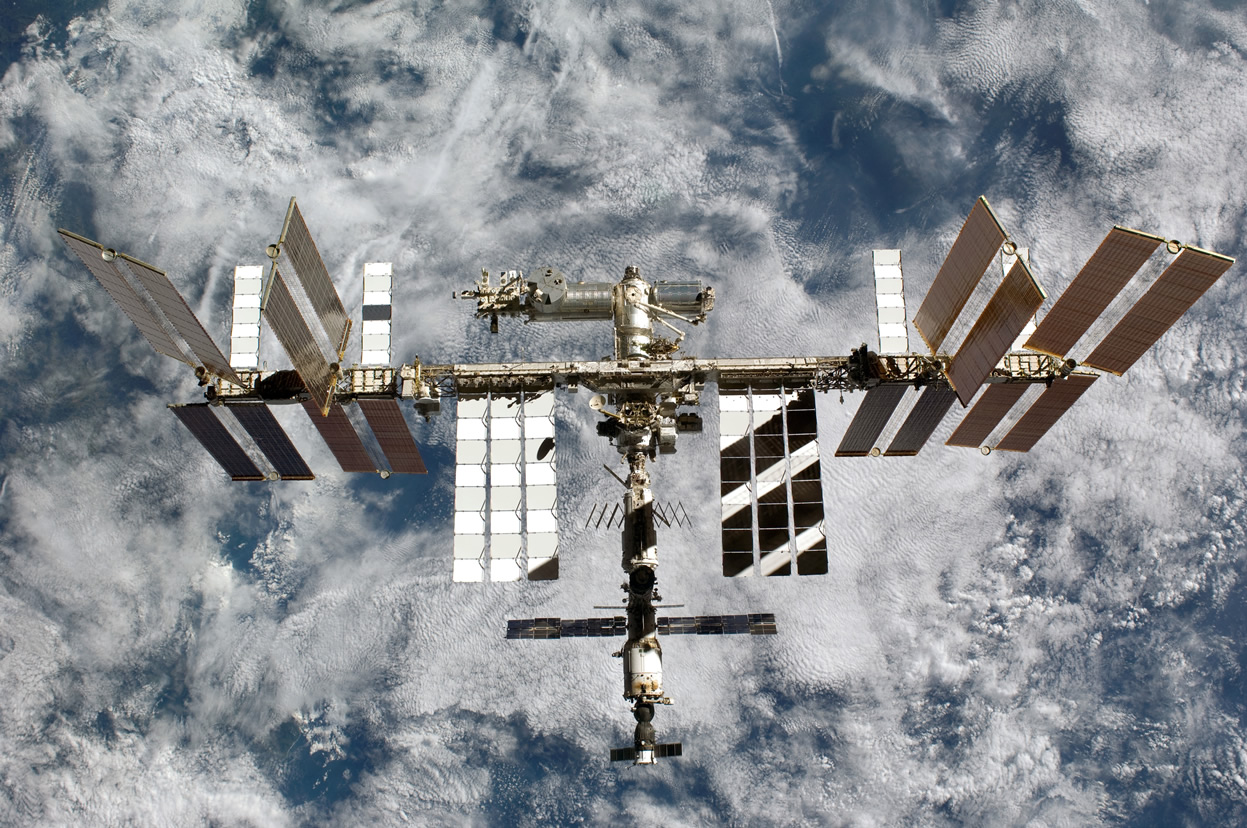


This gives the station crew a chance to take around 400 pictures of the shuttle's heat-shielded underbelly, which are beamed down to Nasa staff and examined for cracks and holes. The shuttle approaches the space station from below and performs a graceful backwards somersault as it closes in. Go by shuttle and you will need 900 tonnes of solid rocket fuel and half a million gallons of liquid oxygen and liquid hydrogen to burn in the main engine. Before astronauts can clamber aboard, they first have to chase it down and pull alongside. The station flies at an altitude of 220 miles or so (that's more than 30 times the cruising height of a jumbo jet), but is travelling at a breakneck 17,500mph. To get to the space station takes two days, a journey dictated as much by its speed as its altitude. In orbit, things are weightless simply because they are all falling at the same velocity. The orbiting outpost – all 450 tonnes of it – is forever falling to Earth and would crash-land were it not moving so fast as to maintain a gentle curve around the planet.
Ustream international space station free#
The footage of weightless, grinning astronauts pulling somersaults and chasing food through the air make it seem as though the space station is floating free from the pull of gravity. The longer the stint, the closer these veterans come to perfecting the art of life in freefall.Īnd falling it is. Only a fraction have stayed more than six months on the largest orbiting spacecraft ever built. Next week, Nasa will commemorate 10 years of life on the space station (the first residents arrived on 2 November 2000), but fewer than 200 people have first-hand knowledge of life on board. "Often it all comes back to me in dreams." "I still can't believe what I've seen sometimes," says Piers Sellers, the Sussex-born-boy-turned-Nasa-astronaut who took part in the most recent shuttle mission to the station in May. If the experiences of those who helped build and man the station are anything to go by, they are in for an extraordinary time. With more than a decade of construction now coming to an end (next week's shuttle mission leaves only two more before the fleet is mothballed), astronauts can finally look forward to stretching out and using the space station to the full.


 0 kommentar(er)
0 kommentar(er)
